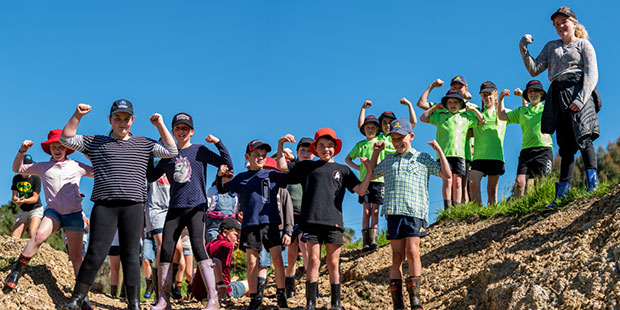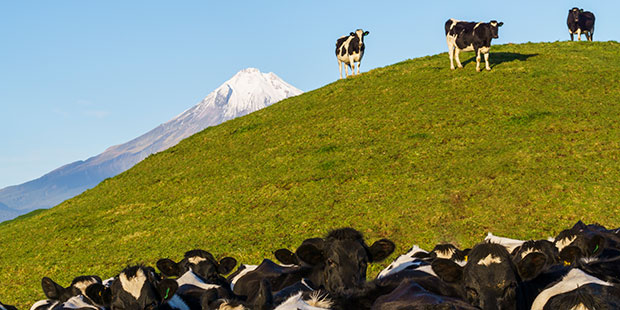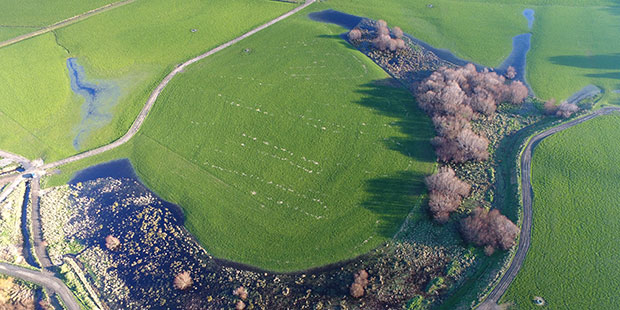Urban issues starting to affect Wanaka
Environmental group says urban growth a threat to lake's natural beauty.


The popularity of Wanaka’s pristine natural beauty could prove to be the lake’s downfall — but not if a group of environmentally-minded citizens has something to do with it.
Environmental consultant Chris Arbuckle, along with agribusiness expert Erica Van Reenen and keen local lake swimmer Eddie Spearing, have initiated the Touchstone project, bringing together local people concerned about the Lake Wanaka catchment, raise awareness of water quality issues, and encourage positive action.

Chris Arbuckle. Photo / Supplied.
Chris Arbuckle. Photo / Supplied.
While the vast majority of the lake’s catchment is rural, Arbuckle says urban issues are just as significant, if not more so, as Wanaka grows in size and popularity. The district’s population has doubled in the past 10 years, and is estimated to reach 50,000 by 2040.
“Stormwater monitoring shows a really high load of bacteria, sediment and nasties such as plastic going into the lake from the urban area,” Arbuckle says. “The infrastructure needs to be upgraded, but the place is growing so fast, it’s hard for the Queenstown Lakes District Council to keep ahead of developers.
“The majority of people in urban environments in Wanaka and Queenstown have moved here because of the wonderful views and it is a wonderful place – but they seem to be a little bit divorced from the idea that their moving there is having an effect on that environment. Instead, they point the finger at the rural community.”

Lake Wanaka. Photo / Chris Arbuckle.
Lake Wanaka. Photo / Chris Arbuckle.
One of Touchstone’s priorities, therefore, is engaging with these urbanites and educating locals on the effects the township has on water quality.
“It’s the biggest challenge facing the lake, not only because of urban development but also because urban people don’t see themselves as part of the problem — they say the council has to fix things but then they complain about their rates going up.”
Arbuckle says the Touchstone initiative aims to both collect information about the current state of the lake, then encourage action to make a tangible difference to water quality. It aims to bring together and mobilise the different groups concerned with the lake, from community groups, farmers and iwi, to scientists and local and central government.
“Part of that discussion is how we as individuals each play a role in this thing called water,” Arbuckle says. “I want Touchstone to be a vehicle within the urban community and build relationships with farmers, too.”
Touchstone utilised government Curious Minds science and technology funding to set up a citizen-science project on water quality and raise awareness of the challenges facing the lake.
Lake swimming is a popular pastime, with around 50 regular swimmers and up to 400 taking part in the annual Ruby Bay swim event in January but, in recent years, there have been outbreaks of ‘lake snow’, largely harmless but visually unpleasant and sticky clumps of algae Lindavia intermedia.
“Everyone was asking the questions ‘Is it safe to swim in the lake?’ and ‘What is this gloopy stuff?’, but no one was really answering them,” Arbuckle says.

Photo / Getty Images.
Photo / Getty Images.
Studies showed the lake water quality was very high — “better than the water that comes out of the tap in some places” — but faced challenges from stormwater and farm run-off.
Engagement with the next generation is a priority; one of the most popular Touchstone projects has been the design, manufacture and placement of steel silhouettes of various birds or fish on drains around the town (to help filter out undesirable materials). Arbuckle worked with local schoolkids to design the silhouettes, based on “what creatures they see in and on the lake that they think are special.”
Four designs were chosen; rainbow trout; the endangered long-finned eel; the native fish koaro, a whitebait species; and the Australasian crested grebe. Grebes were re-introduced to the lake several years ago by retired biologist John Darby and are a distinctive and familiar sight. The shapes were manufactured in stainless steel, as plastic breaks down quickly in Wanaka’s high-UV sunlight, potentially contaminating waterways.

Erica Van Reenen. Image / Taupo Weekender.
Erica Van Reenen. Image / Taupo Weekender.
“We came up with a slogan working with the children. We said they couldn’t have a twenty-word story explaining it and it had to emphasise the idea that ‘only rain goes down the drain’,” Arbuckle says.
Arbuckle and Touchstone are also involved in a wider-reaching rural project, the Wanaka Catchment Group. The group was established in 2016 by local farmers to look at the effect of their land-use on lake water quality, and come up with ways to make improvements.
Around 90 per cent of the farmed catchment by area is now being managed under one consistent environment plan, including the iconic Minaret Station on the north-western shores of the lake, and the Mt Burke and Matukituki stations on the river of the same name.
“A lot of these farmers didn’t feel like they were causing any big environmental issues but, once we started talking to them, the lightbulb went on,” Arbuckle says. Now farmer-funded initiatives to improve water quality have included creating new wetlands and rehabilitating riparian zones, fencing and planting waterways, and providing alternative stock access to water.
Arbuckle knows keeping Lake Wanaka pristine will require a multi-faceted approach and Touchstone’s goals need to be far-reaching.
“We’re dealing with 15 or 16 farming families in the Wanaka Catchment Group, but when you think about urban Wanaka, you’ve got a few thousand people to get on board to change behaviour and keep the lake pristine.”






